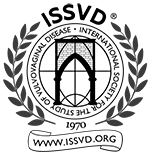






Photodynamic therapy (PDT), is a form of phototherapy involving light and a photosensitizing chemical, used in conjunction with molecular oxygen to elicit cell death. PDT is selective for skin cancer cells. PDT also has proven ability to kill microbes, including bacteria, fungi and viruses. PDT with blue light is used in treating acne.
Heme is synthesized in all cells, with aminolevulinic acid synthase (ALAS) as the rate limiting step. By loading exogenous (topically applied) aminolevulinic acid (ALA) and bypassing the rate limiting step, protoporphyrin IX (PPIX) which is an endogenously produced photosensitizer, accumulates selectively in skin cancer cells. PPIX absorbs light energy and transfers this energy to oxygen, generating reactive oxygen species, which then lead to cell death. This is the basis of PDT. PDT is used both in cancer diagnosis and treatment.
Actinic keratoses (AK) are the most common pre-cancerous lesions, affecting more than 58 million Americans. 1 in 5 Americans will develop skin cancer in the course of their lifetime. In up to 10% of patients with AK, individual AK lesions, including subclinical AK, progressed to squamous cell carcinoma (SCC) within an average of 2 years. According to recent studies, treating AKs delays the development of SCC. Because we cannot predict which AK will eventually develop into SCC, they should all be treated.
PDT is administered as a same day treatment in our clinic. First, after washing your face with a gentle cleanser, your skin will be degreased by application of acetone or isopropyl alcohol. We will then remove any scales or crust from rough, thickened lesions gently. Following this, we will apply the photosensitizing medication (ALA), in the form of a fluid or gel and allow the medication to dry for 10 minutes. The medication is then allowed to incubate on your skin (in the affected treatment areas) for up to 3 hours. During the incubation period, you are welcome to remain in the clinic or you may leave the clinic and return at the appropriate time for treatment. We may apply a heating mask for 30 minutes prior to illumination with an appropriate light source. Your eyes will be protected during the illumination which lasts for up to 16 minutes 40 seconds, depending on the light source. Following the treatment, your skin will be cleansed gently with soap and water to remove any remaining photosensitizing medication. Sunscreen will be applied to protect your skin from excessive light exposure post treatment. Detailed before and after care instructions will be provided during your consultation for this treatment.
References:
Robinson. JAMA. 2005; 294:1541-43
Rogers et al. Arch Dermatol. 2010 Mar; 146(3):283-7
Karia, Han, Schmults. J Am Acad Dermatol. 2013 Jun; 68(6):957-66
Fuchs and Marmur, Dermatol Surg 2007 Sep;33(9):1099-101
Fernández-Figueras et al., 2014; J Eur Acad Dermatol Venereol.
Honigsman, et al. . Photochemotherapy and photodynamic therapy Dermatology in General Medicine. New York, NY: McGraw Hill Co; 1999:2880-2900.
MacCormack., 2007, Photodynamic Therapy, Advances in Dermatology, v. 22, p.220
Gold. Photodynamic Therapy in Dermatology. New York: Springer Science, 2011.
Siddiqui et al. Am J Clin Derm. 2004;5(2):127-137.






